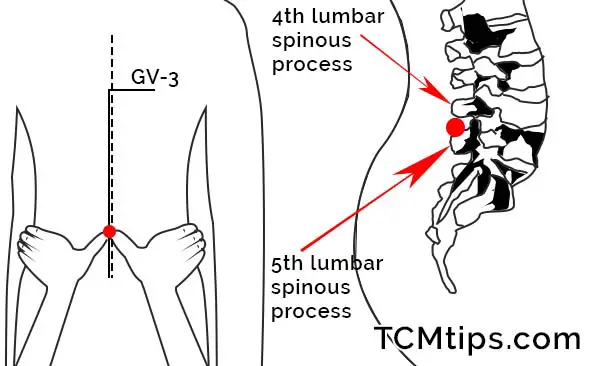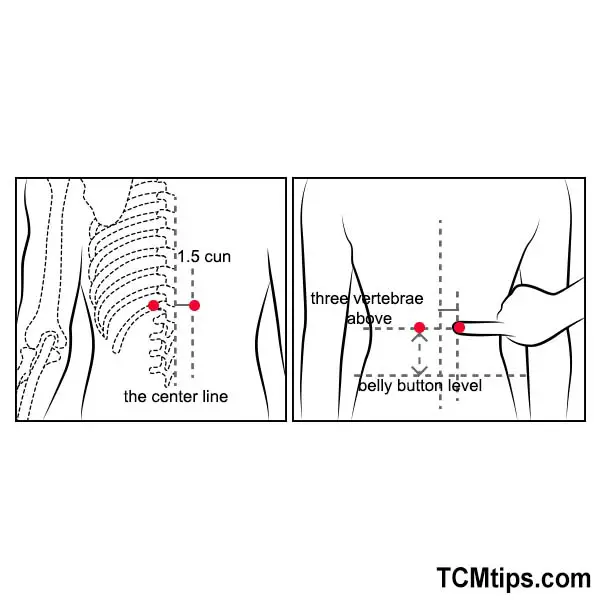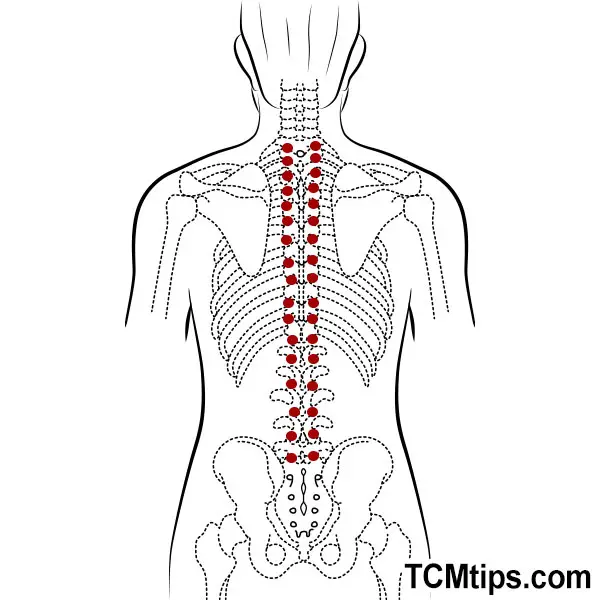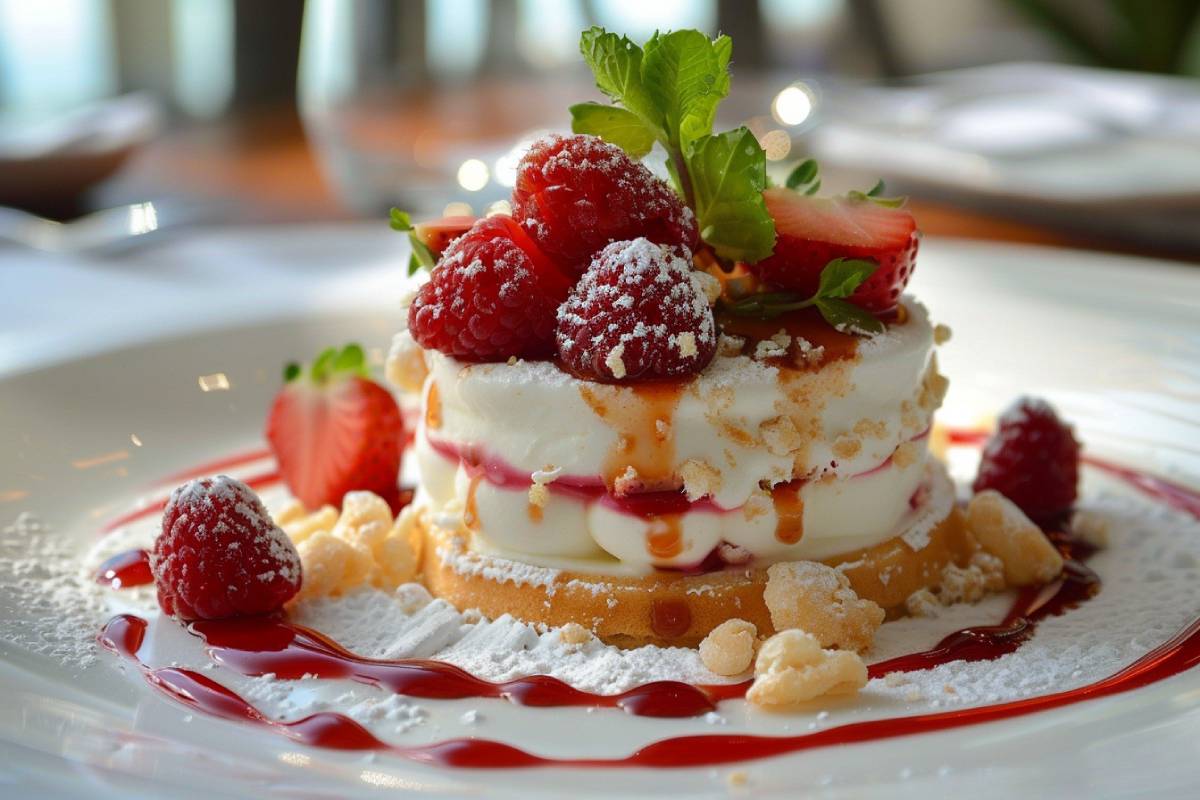Introduction
Traditional Chinese massage therapy, such as Tui Na, follows the principles of traditional Chinese medicine (TCM). It can be used to treat a wide range of ailments, as well as for prevention and health preservation. It works by improving the circulation of Qi and Xue (blood), regulating and promoting the good functioning of the Zang Fu (organs), and dredging meridians and collaterals. In this article, we will introduce you to some key back massage techniques and pressure points in the back that you can try to help relieve middle back pain and other common health issues.
Pressure Points to Target
A. Female Back Pressure Points Massage
Acupressure can be an effective way to help relieve menstrual irregularities and other conditions related to women’s health. Some of the best points to use for this purpose include GV 3 (Yintang), GV 4 (Mingmen), and Yaoyan. These points are located on the lower back and they can help regulate menstrual cycles and improve overall health. BL 17 is also effective for conditions related to blood. One can also use GV-3 as one of the effective acupressure points for lower back pain.



In addition to these points, you can also use points that are related to the TCM diagnosis. The most common Zang Fu (organs) implicated in women’s health issues are the Kidneys, Liver, and Spleen. As such, the back Shu points of each of these Zang (organs) might be worth considering.
Rolling manipulation can be applied to the muscles on both sides of the spinal column repeatedly for 3-5 minutes, especially to Ganshu (BL 18), Pishu (BL 20), and Shenshu (BL 23). Bl-20 is also normally used as one of the acupressure points for ovary cysts, while Bl-23 is used as one of the acupressure points for herniated discs.



B. Back Shu Points
Back Shu points are a group of acupoints that are located along the spine. These points are commonly used in TCM to treat a wide range of health conditions. The specific points that are used will depend on the type of condition being treated and the TCM diagnosis. The bladder meridian, for example, has many acupoints on the back that can be used to treat different health conditions. You may want to focus on the Shu points for each Zang and Fu (organs and meridians) to help relieve pain and other symptoms in the back.
To massage back Shu points, apply gentle pressure with your fingers, knuckles, or a massage tool, and hold for 30 seconds to a minute. You can repeat this several times to help stimulate the flow of qi and improve the functioning of the Zang Fu.
C. Huatuojiaji

Huatuojiaji is a group of acupoints that are located along the spine. These points are commonly used in TCM to treat different parts of the body. According to the book, Chinese tuina massage by Nanjing University of TCM: “Those from the 1st to the 3rd thoracic vertebrae are indicated in disorders of the upper limbs; those from the 1st to the 8th thoracic vertebrae, in disorders of the chest; those from the 6th thoracic vertebrae to the 5th lumbar one, in disorders of the abdomen; and those from the 1st lumbar vertebra to the 5th, in disorders of the lower limbs.”
To massage huatuojiaji points, apply gentle pressure with your fingers, knuckles, or a massage tool, and hold for 30 seconds to a minute. You can repeat this several times to help relieve pain and stiffness in the corresponding areas of the body.
D. Are there any back massage techniques or pressure points for increasing arousal?
In addition to relieving pain and other health issues, back massage techniques and pressure points can also be used to help increase arousal. One of the best points to use for this purpose is GV 4 (Mingmen), which is located on the lower back and is often referred to as the “Gate of Life.” This point can help reinforce the Kidneys and improve overall health, including sexual health.
In addition to GV 4, you can also stimulate the lumbar region using a fast application of Tui Fa (pushing and grasping) to warm and reinforce the area. This technique can help increase blood flow to the lower back and improve arousal. For more information, you can visit our article on acupressure points on female arousal.

E. Pressure Points for Middle Back Pain Massage
To target local points for middle back pain, Dr. Leonor Liz recommends using Ashi (trigger) points. To locate Ashi points, press gently on the skin along the spine until you find a tender spot. Once you have found an Ashi point, apply gentle pressure with your fingers, knuckles, or a massage tool, and hold for 30 seconds to a minute. You can repeat this several times to help relieve pain and stiffness in the middle back.
Distal points may also be used to reinforce the treatment, such as LI 4 and GB 34.


Techniques to Use For Back Massage
A. Tui Na
Tui Na is a form of Chinese massage that is often used to treat musculoskeletal disorders and other health conditions. It involves using the hands, fingers, and other massage tools to apply pressure to acupoints and specific areas of the body. Tui Na can help relieve pain, stiffness, and other symptoms associated with back pain and other health conditions.
Tui na is both a form of physical bodywork and a subtle energy medicine. As a physical therapy, it excels at releasing the channel sinews (collectively the muscles, tendons, and ligaments) and facilitating the movement of joints. By opening, releasing, and balancing the channel sinews, Tui na is able to treat not only muscular-skeletal problems but also any ailment that may be caused by emotional and postural holding patterns that have become unconscious and locked into the body’s protective connective tissue armor.
Tui na can be very vigorous and physically active or incredibly subtle and still. It depends on the style of the practitioner and the requirements of treatment. To use Tui Na for back massage, first locate the specific acupoint or area of the body that you want to massage. Then, apply gentle pressure with your fingers, knuckles, or a massage tool, and hold for 30 seconds to a minute. You can repeat this several times to help stimulate the flow of qi and relieve pain and stiffness.
Some books Dr. Leonor Liz recommended on the topic:
Tui na – a manual of Chinese massage therapy by Sarah Pritchard
Chinese tuina massage – Nanjing university of TCM
Illustrated guide of auto Tui Na for common health issues by Dr. Zhuang Yuan Ming and Zhuang Jian Shen
Chinese self-massage therapy by Dr. Fan Ya-li
Here are some studies on the Tui na:
https://www.sciencedirect.com/science/article/abs/pii/S0965229916300012
https://www.liebertpub.com/doi/abs/10.1089/acm.2017.0209
https://www.hindawi.com/journals/ecam/2013/256831/
B. How do you massage back pressure points?
There are techniques that can be self-applied such as patting the shoulders, pressing the points on the lumbar and sacral region, and rubbing the middle and lower back.
To be more accurate, one can use a massage roll or a tennis ball to pressure the affected points and areas. It might also be useful in some treatments for the person to apply a hot compress over the affected area (these can be medicated or not).
Additionally, using a professional massage therapist can be effective for massaging back pressure points. The therapist can use techniques such as Tui Na and rolling manipulation to apply the right amount of pressure to the affected points. This can help to relieve pain and promote good circulation in the affected area.
C. What is the best massage technique for the back?
The best massage technique for back pain will depend on the patient’s specific condition and preferences. Some common techniques used in Tui na are:
Tui Fa: This kneading technique is used to warm and loosen the muscles. You can use your palms, fingers, or thumbs to apply the pressure and use a circular motion or pressing movement to massage the area.
Tui Na: This is a pressing technique that is used to stimulate the acupoints and improve the circulation. You can use your fingers or thumbs to apply the pressure, and use a pressing or tapping movement to massage the area.
Tui Shou: This is a rolling technique that is used to release the tension in the muscles and improve the flexibility of the joints. You can use your palms or fingers to apply the pressure and use a rolling movement to massage the area.
Tui Na follows the same principles as TCM so it can be used to treat different types of ailments. Besides this, it can also be used for prevention and health preservation.
Generally, Tui Na improves the circulation of Qi and Xue (blood), regulates and promotes the good functioning of the Zang Fu, and dredges meridians and collaterals.
Dr. Leonor Liz thinks that the following back massage pressure points chart is easy to understand for especially beginners. This chart doesn’t show each acupoint but it shows that basically each acupoint is located on the spine or two(or four) finger widths outside from the spine to the left and right.

Tui fa and Rou fa. These techniques are both very intuitive to learn and are good for a larger area as shown in the image.
D. Which Direction Do I Massage In?
The direction used depends on the condition you are treating and therefore if you want to reinforce or reduce the point and/or meridian.
For circular techniques, the common rule is to rotate clockwise to reinforce and counter-clockwise for reduction.
For longitudinal techniques, you must go along the meridian to reinforce and against it to reduce.
E. How often should I massage and how much should I massage each time?
This is a very subjective topic. It depends on the person and the condition you are treating.
For acute conditions, you should massage more frequently. For chronic conditions, you should massage less frequently.
Dr. Leonor Liz suggests that patients with acute conditions receive treatment every other day, if possible. In cases of severe pain, patients may be willing to visit more frequently in order to resolve the problem quickly. This approach can often lead to the successful treatment of acute issues within a week or two. For chronic conditions, the frequency of treatment will depend on the practitioner’s approach and style. Patients may be treated once a week for an hour or twice a week for half an hour. It is helpful to think of treatment in terms of 6-10 week blocks.
F. To maximize massage effectiveness, what should I do and not do before and after a massage?
Before the treatment, the patient must eat something light and avoid drinking coffee.
After the massage, the patient must rest, eat good food and drink more water. A hot bath, sauna, or application of a hot ointment, can also be effective, depending on the ailment.
Here Are Some Key Points to Summarize the Article:
- Tui Na is an effective type of back massage that follows the principles of TCM and can be used to treat a variety of ailments.
- One can complement back massage with different pressure points to treat specific conditions, such as middle back pain and menstrual irregularities. In addition, the back Shu points and huatuojiaji along the spine can be used to treat different parts of the body.
- Techniques such as rolling manipulation and Tui Fa can be used to massage pressure points on the back.
- The frequency and duration of massages should be tailored to the individual and the condition being treated.
- Proper pre- and post-massage care can help maximize the effectiveness of the massage.
- We have dedicated another article on stress relief using back massage pressure points. Do not miss it!
 P. Sze
P. Sze 



















